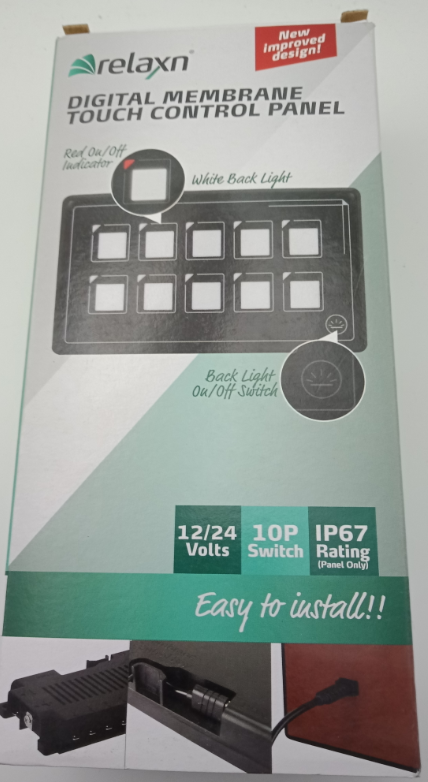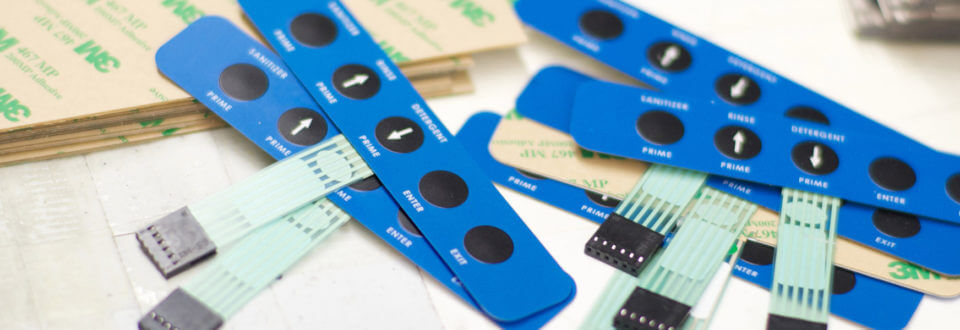A Comprehensive Guide to Membrane Switch Design and Manufacturing
A Comprehensive Guide to Membrane Switch Design and Manufacturing
Blog Article
Comprehending Membrane Layer Changes: The Secret to Dependable and sturdy Controls
Membrane layer switches represent a vital aspect of contemporary user interface design, blending functionality with resilience in various applications. As we discover the complexities of membrane layer switches, it comes to be clear that their role in enhancing control systems is both complicated and extensive, increasing concerns concerning just how finest to utilize their capabilities in future innovations.
What Are Membrane Layer Buttons?
Membrane layer switches are an advanced option in the world of interface innovation, incorporating capability and design perfectly. These gadgets work as an interface between users and electronic systems, integrating a number of parts into a compact format. Normally created from adaptable, slim layers of products, membrane switches are designed to react to touch, enabling users to interact with machinery and electronic tools efficiently.
The main aspects of a membrane switch include a printed circuit layer, graphic overlay, and a spacer layer that avoids unintentional activation. The graphic overlay can be customized to reflect brand identification or user preferences, enhancing looks while making sure functionality. Membrane switches are generally made use of in numerous applications, consisting of medical gadgets, consumer electronic devices, and commercial devices, owing to their longevity and resistance to ecological aspects such as wetness and dust.
One of the essential benefits of membrane switches is their ability to endure deterioration, making them excellent for high-traffic environments. Additionally, they are light-weight and require very little space, enabling ingenious layouts in item growth. In general, membrane changes stand for a sensible and efficient option for contemporary electronic user interfaces, marrying technology with user-centric design principles.

How Membrane Layer Changes Job
The operation of membrane changes depend upon an easy yet efficient mechanism that converts customer input right into electronic signals. These switches are composed of several layers, normally consisting of a graphic overlay, a spacer layer, and a circuit layer. When a user presses the button, the leading layer warps, allowing a conductive component in the circuit layer to make call with a corresponding conductive pad on the bottom of the visuals overlay. This contact closes the circuit and sends out an electronic signal to the device, showing that the switch has been turned on.
The design of membrane layer switches can differ, but they frequently include domes or tactile components to offer responses to the individual, enhancing the general experience. The products used in membrane layer switches, such as polyester or polycarbonate, add to their durability and resistance to environmental aspects, including wetness and dirt. The printed circuits are commonly encapsulated, which secures them from wear and tear over time.

Benefits of Membrane Layer Buttons
One of the primary advantages of membrane layer buttons is their convenience in style, allowing them to be tailored to satisfy specific customer needs and aesthetic here are the findings requirements. This adaptability encompasses various industries, where different forms, sizes, and shades can be utilized to boost individual interaction and aesthetic appeal.
In addition, membrane switches are known for their longevity. Created from robust products, they are resistant to dust, dampness, and physical wear, which considerably expands their lifespan contrasted to standard mechanical switches. This sturdiness makes them especially appropriate for high-traffic settings and applications calling for long life.

Furthermore, membrane layer switches provide a streamlined profile, leading to a thinner design that can be integrated into numerous tools without adding mass. This attribute not only enhances the visual allure but also adds to a more ergonomic item layout.

Applications of Membrane Layer Buttons
Functional and easy to use, membrane layer buttons find applications across a wide variety of markets, consisting of medical gadgets, consumer electronics, and industrial tools. In the medical field, these switches are important to tools such as diagnostic tools, individual monitoring systems, and infusion pumps, where integrity and convenience of cleaning are crucial. Their capability to maintain and hold up against extreme settings capability makes them ideal for such applications.
In consumer electronics, membrane switches my response are used in products like microwaves, cleaning machines, and remote controls - membrane switch. Their sleek design permits for intuitive interface, improving the overall user experience while offering durability and resistance to wear and tear
Industrial equipment also address takes advantage of membrane layer buttons, especially in control panels for machinery and automation systems. These switches offer protection versus dust and wetness, guaranteeing constant performance in challenging settings. Their personalized attributes enable manufacturers to customize them to details functional needs, boosting effectiveness and functionality.
Picking the Right Membrane Switch
When choosing a membrane layer switch, it is essential to think about various variables that affect efficiency and viability for details applications. The key considerations consist of ecological conditions, responsive comments, resilience, and layout specifications.
First, examine the operating environment; switches subjected to dampness, chemicals, or severe temperature levels require certain products to guarantee durability and capability. Next, assess the need for responsive responses. Depending on individual communication, some applications might take advantage of a tactile reaction to confirm activation, while others might favor a non-tactile layout for visual factors.
Sturdiness is one more critical element; membrane layer buttons should be developed to stand up to constant usage, influences, and abrasion. Guarantee the picked switch can withstand the anticipated lifecycle, specifically in high-usage situations.
Conclusion
Finally, membrane changes function as necessary elements in the design of resilient and trusted control systems throughout numerous sectors. Their portable layout, incorporated with durable building and adjustable attributes, boosts customer communication while making certain durability sought after atmospheres. The convenience of membrane changes permits for tailored solutions that meet specific functional needs, reinforcing their significance in modern-day innovation. membrane switch. As markets continue to advance, the relevance of incorporating efficient membrane button remedies can not be overstated.
Membrane layer switches stand for a vital aspect of contemporary user interface design, mixing functionality with durability in numerous applications.Membrane buttons are a sophisticated option in the realm of customer interface innovation, incorporating functionality and style seamlessly. Normally constructed from versatile, slim layers of materials, membrane layer buttons are developed to react to touch, enabling users to engage with equipment and electronic gadgets efficiently.
The layout of membrane layer switches can vary, yet they frequently integrate domes or responsive elements to provide comments to the customer, boosting the overall experience.In conclusion, membrane changes offer as crucial components in the style of trustworthy and sturdy control systems throughout various industries.
Report this page